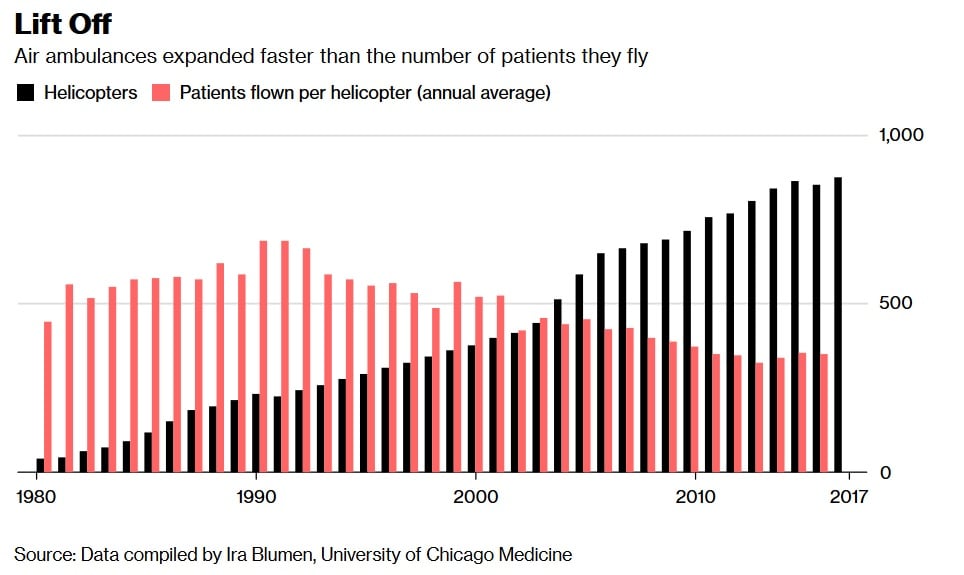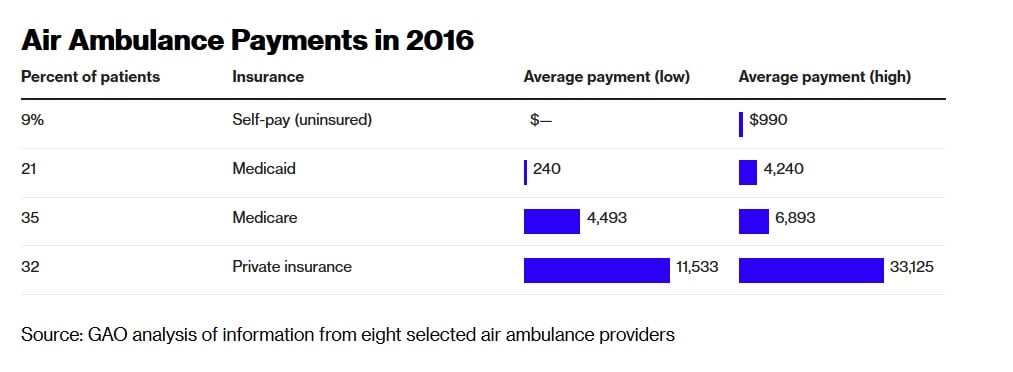 emergency room only medical center in the small town Related: Hospitals are vanishing and undoing ACA may make it worse air ambulance
emergency room only medical center in the small town Related: Hospitals are vanishing and undoing ACA may make it worse air ambulance Three years later, his parents are still reckoning with the aftermath of his 76-mile flight: a bill for $45,930 from for-profit helicopter operator Air Methods.
Rapid rise in flights

Favorable treatment under federal law means air-ambulance companies, unlike their counterparts on the ground, have few restrictions on what they can charge for their services. Through a quirk of the 1978 Airline Deregulation Act, air-ambulance operators are considered air carriers—similar to Delta Air Lines or American Airlines—and states have no power to put in place their own curbs.
reportLegal protections
Air Evac EMS North Carolina North Dakota Texas Wyoming American Securities LLC KKR & Co. LP
Bill me later
For people with private insurance, short flights in an air ambulance are often followed by long battles over the bill.
Aetna Inc.
Evolving industry
When air travel was deregulated, the air-ambulance business was in its infancy. A few dozen medical helicopters, mostly operated by hospitals, were in use in the early 1980s, according to data compiled by Blumen, the University of Chicago emergency-medicine professor.
Despite the apparent glut, air-ambulance operators are profitable. Air Methods had an average annual profit margin of 9.1 percent from 2012 to 2016. Over the same period, companies in the S&P 500 Health Care Providers & Services index had margins of 7.9 percent, on average. PHI, a helicopter company that operates both medical flights and transports for oil and gas drillers, reported average operating margins of 15.7 percent from 2014 to 2017 in its medical segment, compared to 10.4 percent for the benchmark index in the same period.
legislation reauthorization bill© 2025 ALM Global, LLC, All Rights Reserved. Request academic re-use from www.copyright.com. All other uses, submit a request to [email protected]. For more information visit Asset & Logo Licensing.







